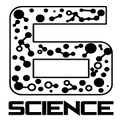Blog
New To The Range – Activated Charcoal
Activated Charcoal
New To 6 Science is our stock arriving March 2024

Activated carbon, sometimes known as activated charcoal, is a type of carbon that is frequently used, among many other things, to filter impurities out of water and air. Small, low-volume holes are created during processing (activation), which significantly increases the surface area that can be used for chemical reactions or adsorption.Adsorption is the process by which atoms or molecules stick to a surface; it should not be confused with absorption. Making popcorn from dried maize kernels is similar to activation in that popcorn is airy, light, and has a high surface-area-to-volume ratio in its kernels. Occasionally, active takes the place of activated.
Gas adsorption shows that one gram of activated carbon has a surface area of more than 3,000 square metres (32,000 square feet) due to its extreme microscopic porosity. Before activation, the comparable area for charcoal is roughly 2-5 square metres. High surface area alone may provide a useful activation level. Adsorption qualities are frequently improved by additional chemical processing.
Paper mill waste has been investigated as a potential source of activated carbon. Activated carbon is typically produced from waste materials like coconut husks. Prior to activation, these large sources are transformed into charcoal. It is called “activated coal” when it is made of coal. From coke, activated coke is made.
Uses
Methane and hydrogen storage, air purification, capacitive deionization, super capacitive swing adsorption, solvent recovery, decaffeination, gold purification, metal extraction, water purification, medicine, sewage treatment, compressor air filters, teeth whitening, hydrogen chloride production, edible electronics, and many other uses are all made possible by activated carbon.

